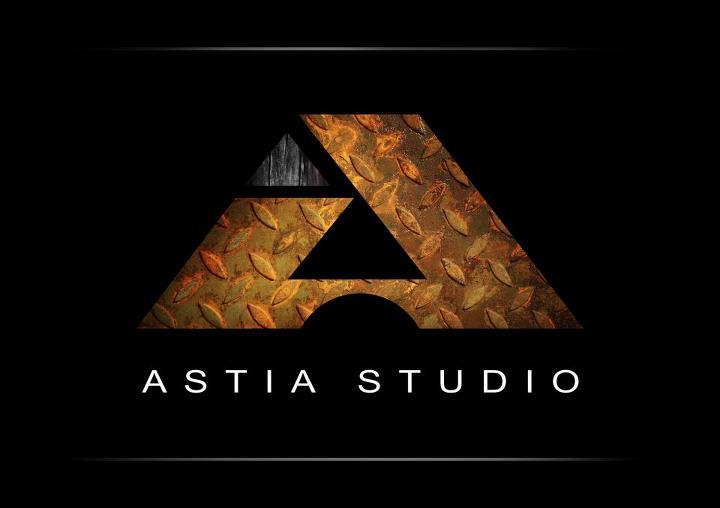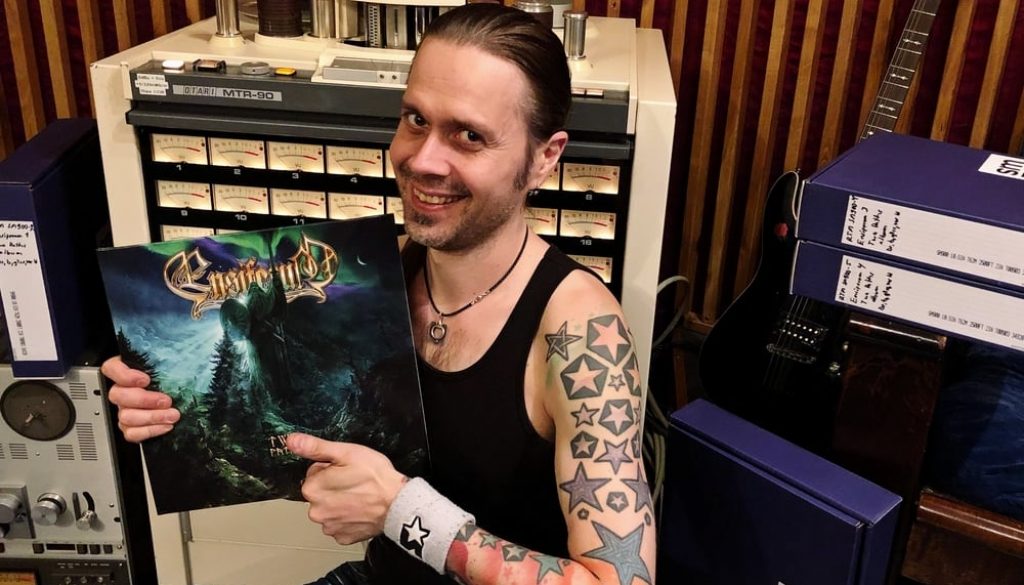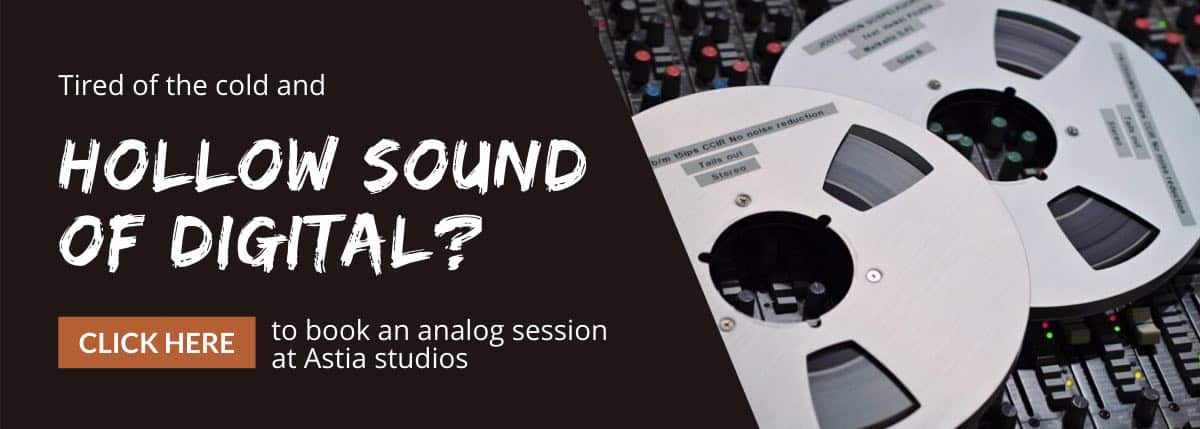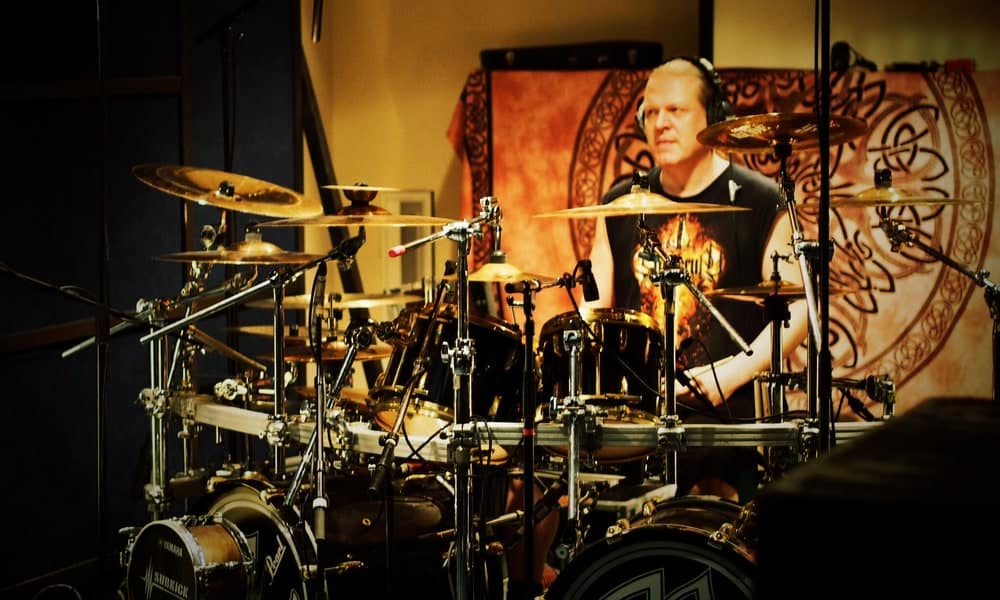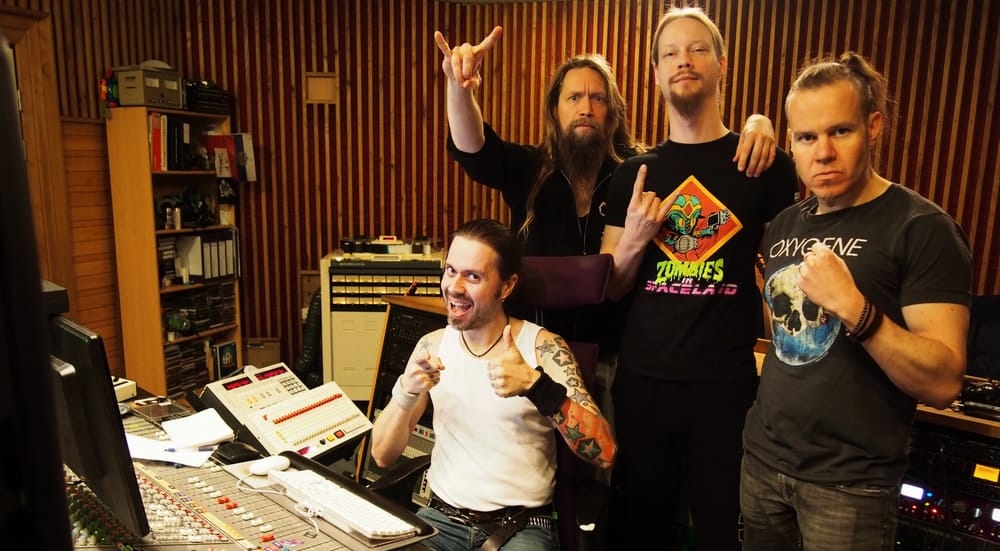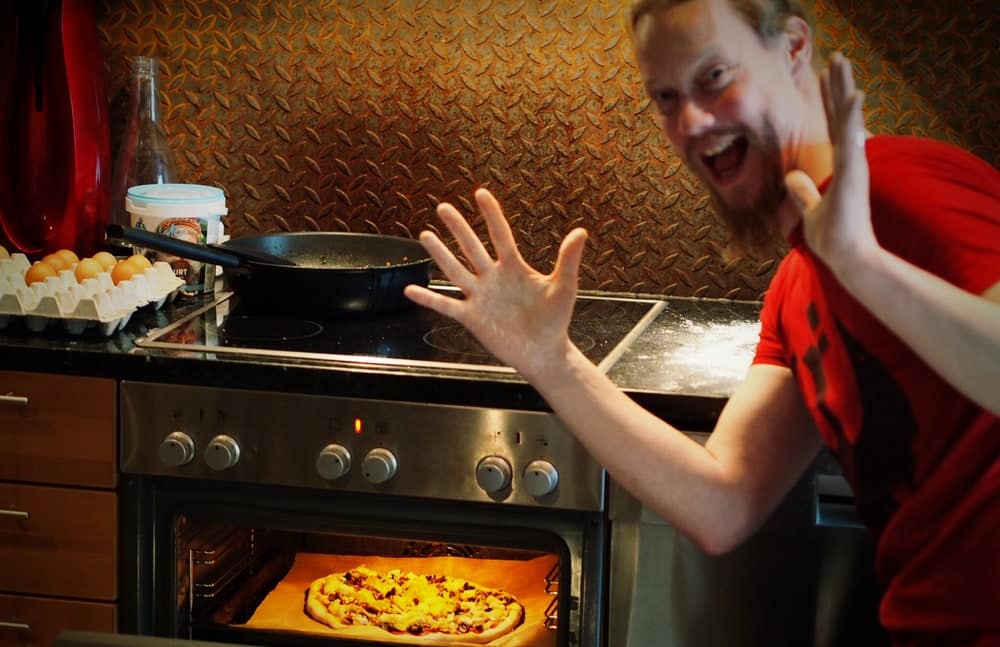How Ensiferum ended up recording Two Paths on tape pt.1
The Finnish folk metal ambassadors, Ensiferum, first came to me in 2014 to make recording, mixing and mastering for One Man Army album. I had worked, or actually “work” sounds too official so let’s change it to “had a blast” with Petri Lindroos (vocals & guitar) back when he was in Norther. We made three albums, two EP’s, singles, covers and countless live shows together as I also toured with them all around the world as FOH engineer. Petri suggested me to produce One Man Army and as the session was a success, the band wanted to come back to me for the next album as well. This post tells the tale of how Ensiferum ended up recording Two Paths on tape.
Watch all 21 One Man Army studio videos: The making of One Man Army album
Essential part of Two Paths concept was to continue the mentality started with One Man Army: “Let’s make a record that sounds like a super tight live album!”
–Sami Hinkka, bass
Let there be demo
When working on an album with big production, I sometimes like to make a demo several months before the actual session. It’s great to record everything on one take, try different arrangement ideas and to have a rehearsal for the actual session. This way we know what works and what does not. Markus Toivonen (guitar) called around the the last quarter of 2016 to reserve both the album and demo session.
On January 2017 Ensiferum entered Astia-studio to make an album demo in a weekend. During reservation I was super excited to tell the band we should record on tape as the sound is superior to computer recording and how much more tape captures compared to DAW. They told me to wipe the drool off my face, to take a deep breath and calm down. If I didn’t know any better this would have been my response to such an outrageous claim too. So I did what I always do and suggested a simple A/B comparison to demonstrate the difference. We would record some songs on computer and some on tape, both with equal processing and settings. The band would listen the mixes thru familiar sound system at home and choose the recording format they like the best.
Let there be tape
On the third session day while I was mixing the DAW songs, the band commented that they should record some of the old material again with me as they love how instruments and especially drums sound at Astia. Once I started mixing the songs captured on tape, they were blown away by the huge sound difference. So Ensiferum members unanimously decided we should record as many instruments on tape as possible!
As I had failed to verbally explain the difference prior to demo session, all it took was this simple A/B comparison to convince the band. They are known to be very strict about sound and so the new album would be recorded on tape. Funny fact: I used 20+ year old tape that sounds very dark to record the demo and still they loved the sound. On the album we used new tape and that made the result even better.
During demo session we compared the sound of computer and tape recording. The latter (analog) was clearly bigger and beefier while computer (digital) was thin and “plastic like”. The sound from tape fills the space and sounds like the band is performing in the same room with you. From computer this was mostly absent.
–Markus Toivonen, guitar
Let there be drums
Ensiferum drummer Janne Parviainen is one of my all time favourite drummers to work with. He is rock solid and his drums always sound great. Janne is super cool also as he always speaks his mind. You can be sure that he tells you exactly what he thinks both in good and bad. I think honesty and truth is the path you should always choose. If you cannot handle the truth, then it kind of makes you a liar so always be honest and stay true!
The whole band was playing together in the same room to maximize the live energy. I captured drums in few days on tape using Otari MTR-90mkII 2″ 24 track tape machine with new RTM SM900 2″ tape. We reserved three reels of tape for the session. Each reel can have 32 minutes of material including the pauses between songs. Having this much tape allowed us to record several drum takes to choose from. We used metronome on every song like they always do. There was no editing as Janne played each song from beginning to end with one perfect take. The band including Janne were blown away by how energetic drums sounded.
Astia drum room sounds very good and brings out how the drum set itself sounds. I like how the PA brings punch to both playing and sound. A bit like during a live show. Especially in metal, bass drum isn’t too fancy and the use of a PA system improves it.
–Janne Parviainen, drums
After completing drums for all songs, I requested the possibility of optional takes without metronome for three songs that didn’t have orchestral parts. The band turned me down. I had to bribe them with organic beer and offer tape for the optional takes for free and then they reluctantly agreed. We had metronome on the first two bars only and when drums started, the metronome was turned off. Each Ensiferum member was amazed by how much better drums were without metronome. After comparing the energy and drive, they chose the metronome-free takes to be on the album. Can you spot which songs on the album are recorded without metronome?
Let there be bass
I had synchronised tape to DAW as described on my video here to have enough tracks for the session. My original plan was to record only drums on tape, but during demo session Ensiferum members told they wanted to have as many instruments on tape as possible. So we ended up recording not only drums but also bass, rhythm guitars and Petri’s lead vocals on tape. As always, the whole band was playing together during drum tracking. I always do my best to have the band play like they do live; with lots of energy, emotion and drive. The 3 kW PA system in drum room helps as every time drummer hits the bass drum everyone in the room not only hear but also feel it. This creates a live concert feel and always improves the result.
Recording basic tracks all together added a nice touch of jamming to the album.
–Netta Skog, accordion / vocals
Ensiferum bass player Sami Hinkka is an animal especially on stage. He has done albums where he plays very tame and simple patterns. As I had seen them live several times and witnessed his enormous stage energy, I wanted to capture that on Two Paths. Sami was in flames during drum recording and for two songs we captured bass live together with drums. That’s something they had never done before. There were moments when we had no idea what Sami was playing, but it all sounded so awesome that we just had to keep those takes too. On few songs we overdubbed only a note or two as his playing was spot on. Most of the time during drum recording, he was playing super good and perfectly locking-in with drums. Years of playing together makes all instruments super tight!
As we played the basic tracks together anyway so why not capture drums and bass live. This was the case on at least two songs; just one live take from beginning to end. Pretty Old School! And then while at it, why not record it all on tape?
–Sami Hinkka, bass
Sami used Mesa/Boogie Bass 400+ tube bass amp with Mesa/Boogie 2 x 15″ cabinet and we had a SansAmp preamp I had purchased from Jukka Koskinen (Wintersun) for distortion. I had an AKG D112 microphone some 20cm away from the cabinet to Trident Vector 432 mixing console mic preamp and Universal Audio LA2A hardware compressor on insert on the way in. We didn’t use any eq on bass during recording and mixing as I’d rather tweak the source than use mixing console eq.
Let there be guitar
We recorded guitars a lot faster compared to previous albums as with tape there is this strange “forgiveness” factor. A small mistake doesn’t sound like a mistake at all. This is something we encounter on every session. As usual, I recorded Markus and Petri playing rhythm guitar one at time. Both used their own amps as I no longer record all guitars using just one amp. Once the sound was right I was just waiting for the guitar player to lock-in with other instruments and in no time we had all guitars completed.
During the session I came up with a string cleaning method that made guitar tuning easy and fast. Read more about The Coolest Tuning Tip Ever post here. On earlier sessions we usually spent a good half an hour in the morning to warm and tune the guitar. Now we picked the guitar up, warmed and cleaned the strings and in 5 minutes we were recording. The Coolest Tuning Tip Ever is one of the things that has proved to save time in studio on every session. Since I started using it we haven’t encountered any situation where guitar refuses to get in tune and so it gets my highest recommendation.
Rhythm guitar microphone was Shure SM58 with grill removed. I pulled the mic back some 50cm away from the speaker as explained on How To Improve Guitar Sound blog post here. The microphone went to Trident Vector 432 mic preamp with no eq. I compressed a bit with Drawmer 1968ME hardware compressor on the way in.
About rhythm guitars and sound I can say that it was better with the microphone further away from the speaker. It might also bring more genuine feel as you usually don’t listen guitar with your ear touching the cabinet.
–Markus Toivonen, guitar
Read our other posts with comments from Ensiferum members:
- Better vocal recording pt. 1
- How to improve bass sound pt. 1
- How to improve guitar sound pt. 1
- The coolest tuning tip ever pt. 1
- To metronome or not
- Vinyl records and how to improve enjoying music
Let there be the end of part one
Thank you very much for reading the first chapter of how Ensiferum ended up recording Two Paths on tape. Want to learn how Petri recorded his vocals, about Netta’s accordion parts and how for the first time the band accepted mix version 1 to be on the album? This and much more I will reveal on the 2nd part of the post. Meanwhile I would love to hear your thoughts, comments and questions about the topic so please write them below.
To experience as awesome session as Ensiferum click here and let’s continue the discussion. Thank you very much and all the very best!
Astia-studio is a full analog recording studio located in eastern Finland with 25 years of experience. Bands and artists from all over the world including USA and the furthest corner of Russia, Vladivostok have arrived to us for tape recording sessions.
